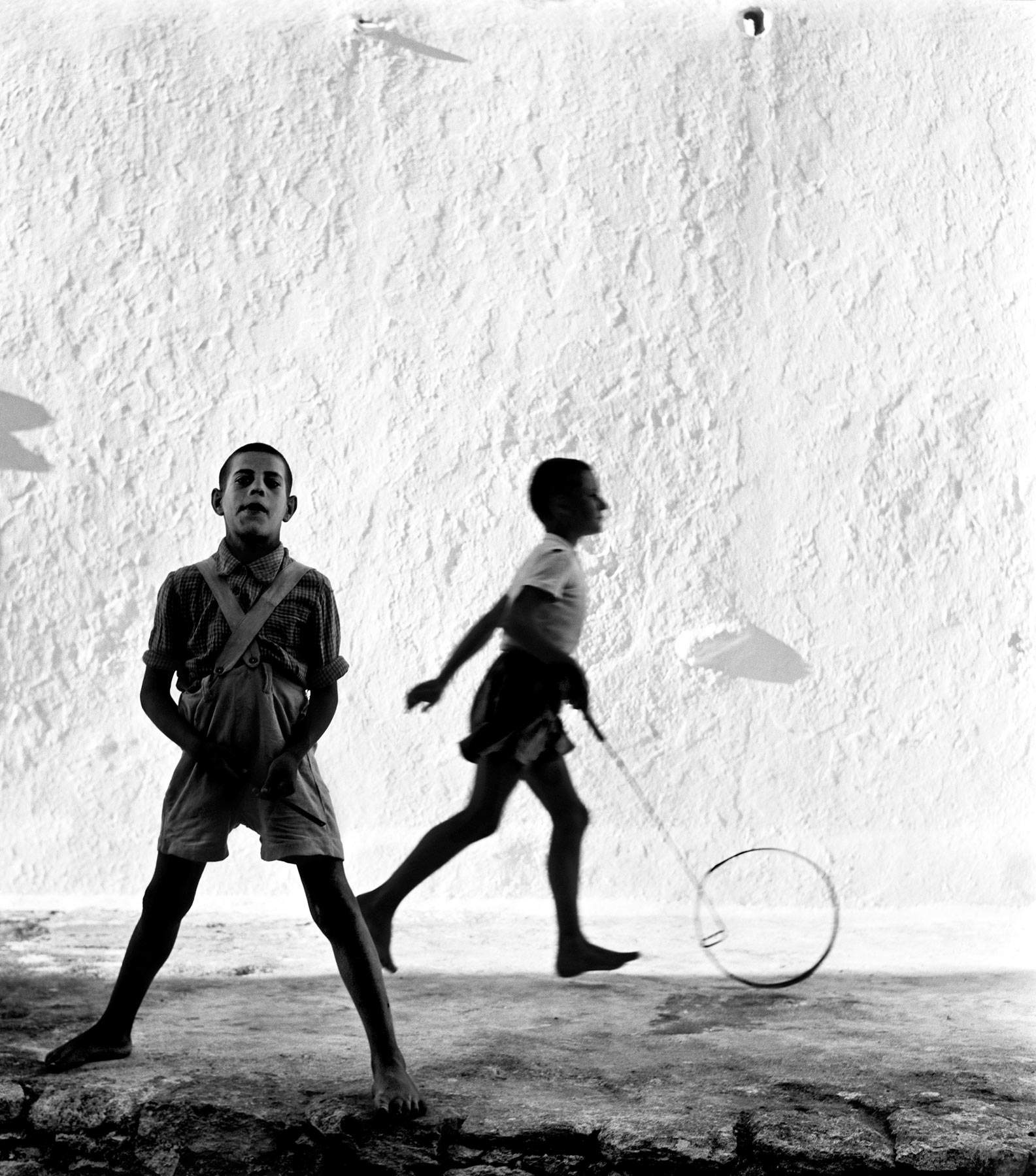From June 23 to September 6, 2020, the Castello Visconteo Sforzesco in Novara will host the exhibition Piergiorgio Branzi. The Turn of the Eye, a retrospective dedicated to one of the most important contemporary Italian photographers, Piergiorgio Branzi (Signa, 1928), with sixty shots intended to cover more than fifty years of the Tuscan artist’s career.
The exhibition, curated by Alessandra Mauro, explores Branzi’s career through chronological thematic cycles, outlining a geographic map that moves from Tuscany to southern Italy and the Mediterranean, then up to Paris and Moscow, where Branzi worked as a RAI correspondent. It starts ideally from Tuscan chiaroscuro, as a tribute to his home region, with photographs taken in the 1950s that belong to the first part of his career, all strictly in black and white to respect the chromaticism of that land, which, according to Branzi, is played out between the graphite gray and the dull ochre of the stones that characterize the palaces and streets of Florence and between the dark green of the cypress and the silver green of the olive trees that distinguish the Tuscan countryside. For Branzi, photographing meant drawing, and it was precisely drawing that became a practice that the artist never abandoned and that is particularly evident in this series of shots, as in the images of the Arena and the Boboli Gardens in the snow, or the one of the black wall with his brother, often used as a model, shrunken into the bottom of what looks like a bottle carved into the wall.
Piergiorgio Branzi’s journey continued in the rest of Italy, particularly in the Meridione, which he found as an archaic and painful country and which he shared with Spain and Greece, the other two nations he crossed with his camera. These are images that Branzi himself called of “realism-formalism” with a social value, casting a glance of attention, but even more of compassion, toward a social reality that had emerged from the war less than a decade before.
The exhibition continues by offering shots taken between 1962 and 1966 in Moscow, the then Soviet capital where Branzi worked as a RAI correspondent. What emerges is an encounter with the everyday life of a society, then mysterious and certainly little known but in slow and constant change where, amid snowy cityscapes and celebrations of the communist regime, one is confronted with encounters of extraordinary humanity. Again, there is a section of the exhibition devoted to Paris, where Branzi lived as a flaneur wandering aimlessly through its squares, boulevards and bistros, letting himself be amazed by the glances and surprised by chance encounters. Finally, the exhibition closes with the section devoted to Le Forme, or the Tuscan photographer’s most recent, decidedly more experimental production.
“The turn of the eye in which Piergiorgio Branzi leads us with his photographs,” says Alessandra Mauro, “is a whirlwind of images and memories, of memories, impressions and thoughtful choices. Of consistent observations in which the gaze is always ready to travel the world, tracing and naming the vision of profiles of lands and stones. A series of views and ’reviews’ that communicate the author’s own existential experience, his breath. That of a profoundly attentive body, happy to continue to live by wonder and observation.”
The exhibition is organized by Contrasto with Fondazione Forma per la Fotografia and Contrasto Galleria in collaboration with Fondazione Castello visconteo-sforzesco of Novara and under the patronage of the Municipality of Novara. An Edizioni Contrasto volume accompanies the review. Hours: Tuesday to Sunday from 10 a.m. to 7 p.m. Tickets: full 8 euros, reduced 6 euros. Strongly recommended to make reservations. For info visit the Novara Castle website.
Image: Piergiorgio Branzi, Mykonos, 1957.
 |
| A retrospective dedicated to photographer Piergiorgio Branzi at the Novara Castle |
Warning: the translation into English of the original Italian article was created using automatic tools. We undertake to review all articles, but we do not guarantee the total absence of inaccuracies in the translation due to the program. You can find the original by clicking on the ITA button. If you find any mistake,please contact us.